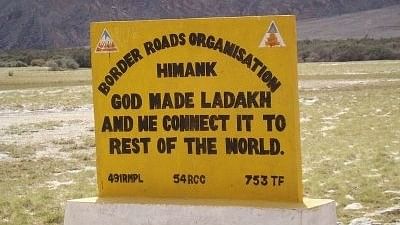New Delhi: The Narendra Modi government began the process of separating Ladakh from Jammu and Kashmir nearly a year ago through a systematic series of steps, ThePrint has learnt.
Union Home Minister Amit Shah Monday announced the move to scrap Article 370, which provides a special status to Jammu and Kashmir, and proposed the bifurcation of the state into two Union Territories through a fresh Jammu and Kashmir Reorganisation Bill, 2019. The bill proposes making Jammu and Kashmir a Union Territory with a legislature and Ladakh a separate Union Territory without an assembly.
“This has been a long-pending demand of the people of Ladakh, to give it the status of Union Territory to enable them to realise their aspirations. The Union Territory of Ladakh will be without legislature,” Shah said in Parliament.
Also read: Explained: This is what Modi govt has done to scrap Article 370, 35A in Jammu & Kashmir
Three-step process
In September 2018, the government set the wheels in motion by providing more autonomy to the Ladakh Autonomous Hill Development Council through major amendments to the existing Act, approved by the J&K state administrative council headed by Governor Satya Pal Malik.
The amendments gave the council the power to tax — certain locally-collected tax could be levied and credited to the Ladakh Hill Development Council account, not the J&K government. The amendments also gave local residents some say in which officers would be posted to the council.
“The idea was to make them more autonomous and less dependent on the J&K council,” a senior J&K administration official told ThePrint.
Then, in February, a separate Ladakh division was created, which was to be administered by a divisional commissioner and an Inspector General-rank police officer. Earlier, the state had only two divisions — Jammu with 10 districts and Kashmir with 12, including Leh and Kargil.
“The creation of a separate Ladakh division helped create a separate administrative set-up for Ladakh, against the earlier situation of being controlled by the Kashmir administration,” the official said.
The third step was to ensure that all the funds for the centrally-sponsored programmes reached Ladakh directly.
“There were complaints from locals that projects in Ladakh were not given priority by the J&K government, and hence Ladakh was left with little funding for development. So, it was decided that there would be a direct flow of money to Ladakh,” a second government official told ThePrint.
“Several developmental projects in Ladakh, such as commencement of the Zojila Tunnel on the Srinagar-Leh National Highway and the Srinagar-Leh power transmission line are examples of central projects for Ladakh’s population. The idea was to ensure more money, funds and schemes for the Ladakh population.”
Also read: On Article 370, India hasn’t violated any international treaty. That’s why world won’t react






